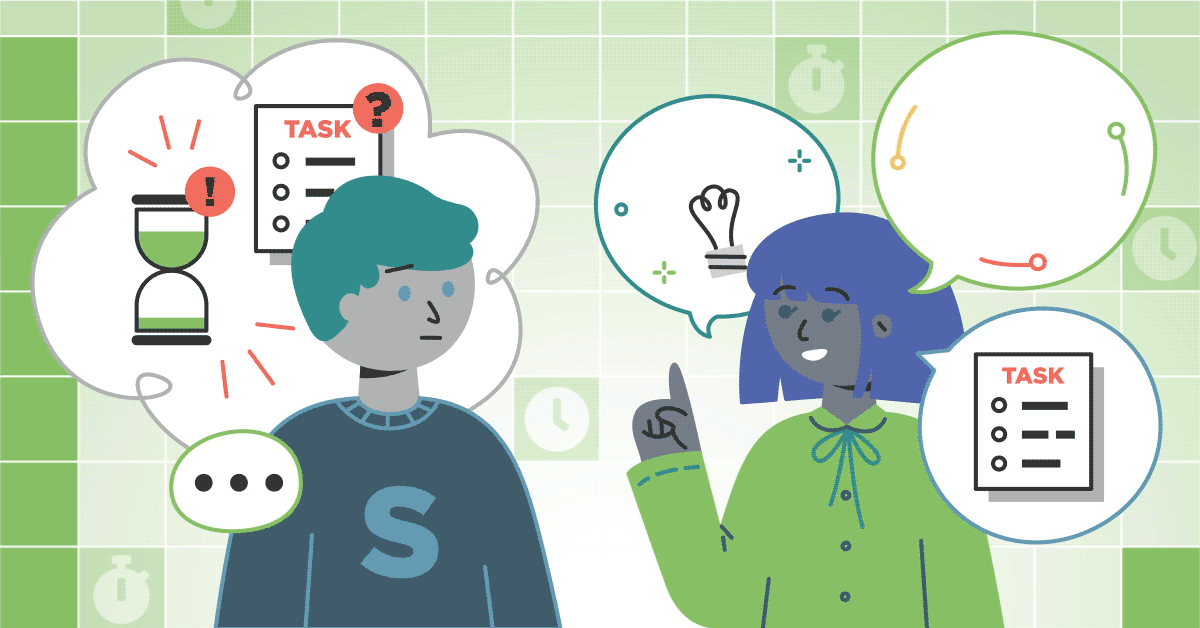DISC Selling Skills for Direct Communicators
Interacting with others can be difficult for any behavioral type, especially when you're "selling" to someone else.
Putting yourself in a 'selling' situation isn't just something salespeople do; you can be selling someone an idea, a new method of working together, a promotion, or just a deeper connection.
These tips apply to all kinds of situations and interactions with others.
This blog series will review each DISC type and how they can best interact and "sell" to the other behavioral types. Up first is the Direct behavioral style, or a high D communication style.
The Direct Communicator In-Depth
Direct communicators are results-oriented, especially in a salesperson role.
They want to close fast and that can lead to them becoming argumentative and aggressive in the pursuit of their goal. They might try to overpower the person they're selling to through direct and combative persuasion.
They may not follow up properly and can be unprepared, but they can also handle several customers at once and don't get flustered in heated situations.
How Direct Communicators Can Sell to Every Behavioral Type
Direct Communicators Selling to Direct Communicators (High D)
The Direct communicator is looking for results. Don't dictate or try to overwhelm another high D; that will only cause the deal to fall through. That being said, you need to stand your ground! You know who you're dealing with because they're like you, so make sure to handle yourself well!
Trying to form a friendship will be fruitless; this interaction needs to be firm and fast. High Ds decide quickly so move at their pace and get straight to the point.
You need to take a step back here and let the Direct communicator "win" the interaction. That doesn't mean backing down or not making your point; it simply means your fellow Direct communicator needs to leave the conversation feeling like they prevailed or the desired outcome was their idea. (That means you win too!)
Direct Communicators Selling to Reflective Communicators (Low D)
The Reflective communicator is looking for an agreement.
They need a slow approach— being pushy won't result in a good experience for anyone. Reflective communicators need time before they make a decision.
The more aggressive you are, the longer you will have to work to gain their trust. If you try to overpower a Reflective person, you might conclude and 'win' the interaction, but this kind of behavior from you will spoil future interactions.
If a Reflective communicator just agrees with you to end the conversation, you haven't won! You lost the opportunity to make a deeper connection.
Just because people with a low Dominance score are friendly and low-key doesn't mean you can steamroll them! Stay straightforward and to the point without being cold.
Make sure not to talk down to them, either, and back off if they withdraw. With time and consideration, you can sell and sell well to a Reflective communicator.
Direct Communicators Selling to Outgoing Communicators (High I)
The Outgoing communicator is looking for the experience.
Outgoing communicators are people-oriented, enthusiastic, and skilled negotiators, so don't expect to end the interaction quickly. Let high Is talk and lead the conversation. When you do talk, focus on people and the impact of whatever you're selling.
Don't misinterpret an Outgoing communicator's enthusiasm for naivety! If you try to talk down to them, expect poor results. High Is can sense insincerity and they won't appreciate it.
Direct communicators need to focus on being personal, friendly, and genuine in this interaction.
High Is thrive in positive, fun situations, so make sure to smile and take a friendly approach! If that's not quite your style, another way you can connect with an Outgoing communicator is to provide recognition.
Acknowledge their contributions and successes— they'll appreciate it!
Direct Communicators Selling to Reserved Communicators (Low I)
The Reserved communicator is looking for a logical, unemotional interaction.
Reserved communicators are restrained, controlled, and reflective. They prefer to be socially discreet and can struggle to engage with styles very different from their behavioral style, so this is not the right situation to try and overpower them!
If you're talking in person, give them space! Don't get in their face and mind your volume level. Try not to be intimidating— Reserved communicators are quiet by nature, so if you are overly formal in your approach, they might be uncomfortable or intimidated.
The best thing you can do to sell to a low I is to focus on active listening. If you're trying to sell a solution, ask what tactics they have already tried. Integrate these previous efforts into your pitch— any information from a Reserved communicator is valuable so treat it as such.
Reserved communicators don't like feeling like they're in the way, so turn your 'sell' into a collaboration. This will help them avoid feeling overpowered and overwhelmed.
Direct Communicators Selling to Steady Communicators (High S)
The Steady communicator is looking for understanding.
Steady communicators prefer a slow pace, defined responsibilities, and clearly outlined expectations. They are considerate, compassionate, and accepting of others, but might seem indifferent or hesitant on the surface.
If a Direct communicator is aggressive and fast-paced in selling approach, you're going to lose them. You need to build trust and focus on giving them the facts they need.
Lay everything out for them and give them time to ask questions and think through your proposal. They will want to understand risks and the likelihood of a desirable outcome. Once they believe in what you are selling, they will become loyal advocates.
Showing sincerity in your presentation will go a long way in building trust with a Steady communicator. Focus on people and the positive impact you're going to have, and make sure you're listening to their thoughts and concerns along the way.
Direct Communicators Selling to Dynamic Communicators (Low S)
The Dynamic communicator is looking for new ideas.
Low Ss are open and confident about sharing information, and they prefer lively, fast-paced conversation. You have to set a fast pace to keep their attention!
Trying to dominate the conversation will lose their focus and turn them off from new ideas, so keep things snappy and informal. Typically, there's a lot of crossover between Direct communicators and Dynamic communicators. Lean into your similarities!
Be open to new ideas in the conversation without losing sight of your goal; a Dynamic communicator will bounce all over the place if you let them, so try to keep the conversation on track without being overly formal and structured.
If you can tie in their energy and their dynamic approach to your pitch, you'll have more success.
Direct Communicators Selling to Precise Communicators (High C)
The Precise communicator is looking for information.
High Cs are dependent, neat, careful, and compliant. They want to get the job done right and thrive on establishing routines and processes to follow in the workplace.
The best thing you can do in your conversation with a Precise communicator is to back up your decisions and rationale with hard data. You need to give more information than you think you need— there's no such thing as too much data in a Precise communicator's mind!
It's best to keep it all about business with a high C. Don't get personal or ask them personal questions— the interaction should be as straightforward as possible. You also should keep control of the situation, because a Precise communicator will appreciate the structure of the interaction.
Direct Communicators Selling to Pioneering Communicators (Low C)
The Pioneering communicator is looking for a vision.
Low Cs are independent, unconventional, experimental, and outspoken. They can roll with the punches and adjust on the fly and might even prefer to do so instead of adhering to a rigid structure, so make sure that you can be flexible while keeping your end goal in sight.
Pioneering communicators want to see the big picture! Paint that picture for them by focusing on the effect of what you're trying to sell; what's the immediate and then long-term impact of what you're pitching? Dream with them and you'll capture their interest.
Something to keep in mind is that you're going to be responsible for keeping the conversation on track. Being able to guide back to your objective without overpowering them will be key.
Pioneering communicators aren't interested in being dictated to; if you can show them where you can go together, they'll be more likely to buy in.
Make the Sale the Direct Way!
Using your behavioral style and the styles of others will either make or break your sales interactions! Direct communicators can recognize their natural style and make the right adaptations to close the deal with all communicators.
Are you interested in harnessing the power of DISC? If you're ready to start using DISC today, TTI SI can help!
Do you want to take a DISC assessment or start using assessments for your team? Let us know here.
Are you interested in joining our network as a reseller? Get the info you need here.

Jaime Faulkner
Jaime believes authenticity and storytelling are the keys to successful marketing. As a graduate from the Hugh Downs School of Human Communication, she loves finding and connecting narratives. When she's not at work, she's psychoanalyzing contestants on The Bachelor, painting, listening to podcasts, or playing tabletop RPGs.





0 Comments